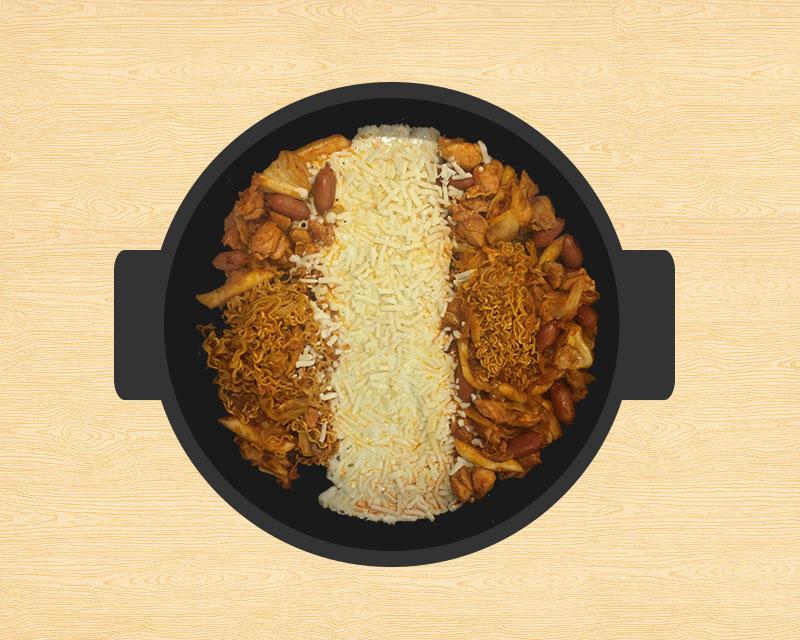By YOUNGSEO JHE, ANDREA KWON
Opening the clear doors of the restaurant, customers meet a large space filled with chairs and tables. Waiters and waitresses move busily from table to table, tending to the needs of the customers. Sitting down with a white apron at the table, the hot iron pan sizzles the spicy stir-fried chicken as the spicy scent goes up in the air.
It is most widely accepted that spicy stir-fried chicken, more commonly known in Korea as dakgalbi, originated in the district of Chuncheon in Gangwon Province. According to legend, Kim Yeong-seok, the owner of a restaurant specializing in pork, was short on the pink meat in the year of the April Revolution and bought chickens as alternatives. He cooked the poultry as he would the pork to make dwaeji galbi—or pork ribs—and this improvised dish soon gained immense popularity as anju, small refreshments served alongside alcohol.
Dakgalbi in fact revolutionized the sense of the word. Prior to its invention, many denounced the body part as gyereuk, a derogatory term for chicken ribs. Gyereuk was seen as not plentiful enough to enjoy like chicken legs or breast but too wasteful to simply throw out. As a result, people used the word gyereuk as a short proverb to denote a deadlock situation. However, with the creation of dakgalbi, chicken ribs transformed into an extensively enjoyed dish in Korea extolled for its affordability and cost-efficiency. Especially popular among young students with modest budgets, dakgalbi attracts the love of both residents and tourists as a nourishing yet inexpensive meal choice.
Although Chuncheon is known to have the best dakgalbi, we were unfortunately unable to travel so far in the middle of the school semester. We thus decided to visit a famous dakgalbi restaurant chain located in the bustling streets of the Gangnam Station area: Jangin Dakgalbi. Dakgalbi is a now food served in many variations, and as such, the store’s dakgalbi dish had a special twist to it.
As we sat down at our table, a waiter greeted us by explaining the self-serving system of the restaurant. The restaurant’s policies were that the customers were to help themselves to the salad and vegetables from the self-serving bar as well as the aprons. Although the salad did look delicious, we opted for simply enjoying the dakgalbi on its own.
Jangin Dakgalbi has a number of options and variations within its menu. Despite the diversity in menus, many choose to order mozzarella cheese dakgalbi along with all the different topping additions such as ddeok, or rice cakes, sausages, and ramen noodles. If you, by any chance, are not a fan of cheese, ordering a regular dakgalbi with any extra toppings is another option.
After some time of waiting, the waiter came with the burning hot pan of cheese dakgalbi. With the cheese in the center separating the chicken, we were able to enjoy dakgalbi both with and without cheese. Despite ordering for two, the amount of dakgalbi was too much for us to finish with one serving of the fried rice. A considerable amount of chicken and sauce were left over in the pan when we finished our meal. Consequently, our fried rice (usually made of the remaining sauce after devouring the chicken) was too savory and spicy for our taste. So beware, future customers: the fried rice can be excessively salty if you don’t finish the dakgalbi.
In general, Jangin Dakgalbi is a perfect choice for hungry individuals craving some savory chicken. Coupled with cheese and fried rice, the dakgalbi at Jangin Dakgalbi is a delightful menu. The restaurant is an appropriate meal choice for people looking for a quick and casual place to eat at.

